I have a JAR in my Android project and I want it to be added to final APK. Okay, here I go:
<dependency>
<groupId>com.loopj.android.http</groupId>
<artifactId>android-async-http</artifactId>
<version>1.3.2</version>
<type>jar</type>
<scope>system</scope>
<systemPath>${project.basedir}/libs/android-async-http-1.3.2.jar</systemPath>
</dependency>
But when I am running mvn package I am getting a warning:
[WARNING] Some problems were encountered while building the effective model for **apk:1.0
[WARNING] 'dependencies.dependency.systemPath' for com.loopj.android.http:android-async-http:jar should not point at files within the project directory, ${project.basedir}/libs/android-async-http-1.3.2.jar will be unresolvable by dependent projects @ line 36, column 25
And in the final APK there are no JARs.
How do I fix that?
